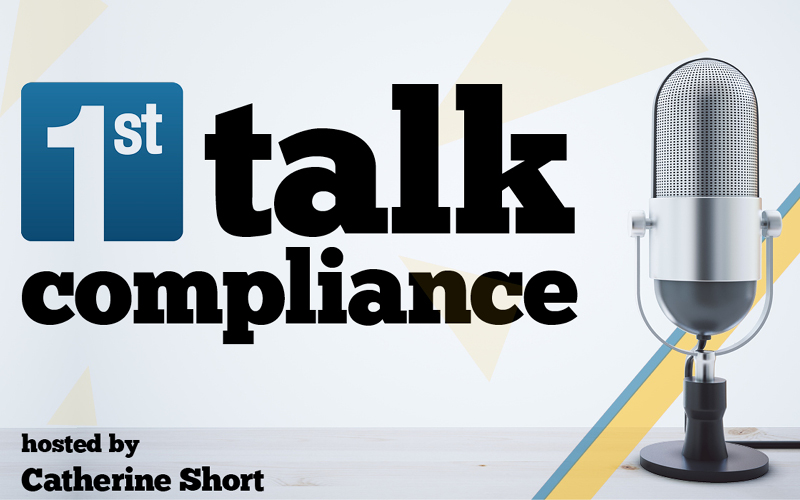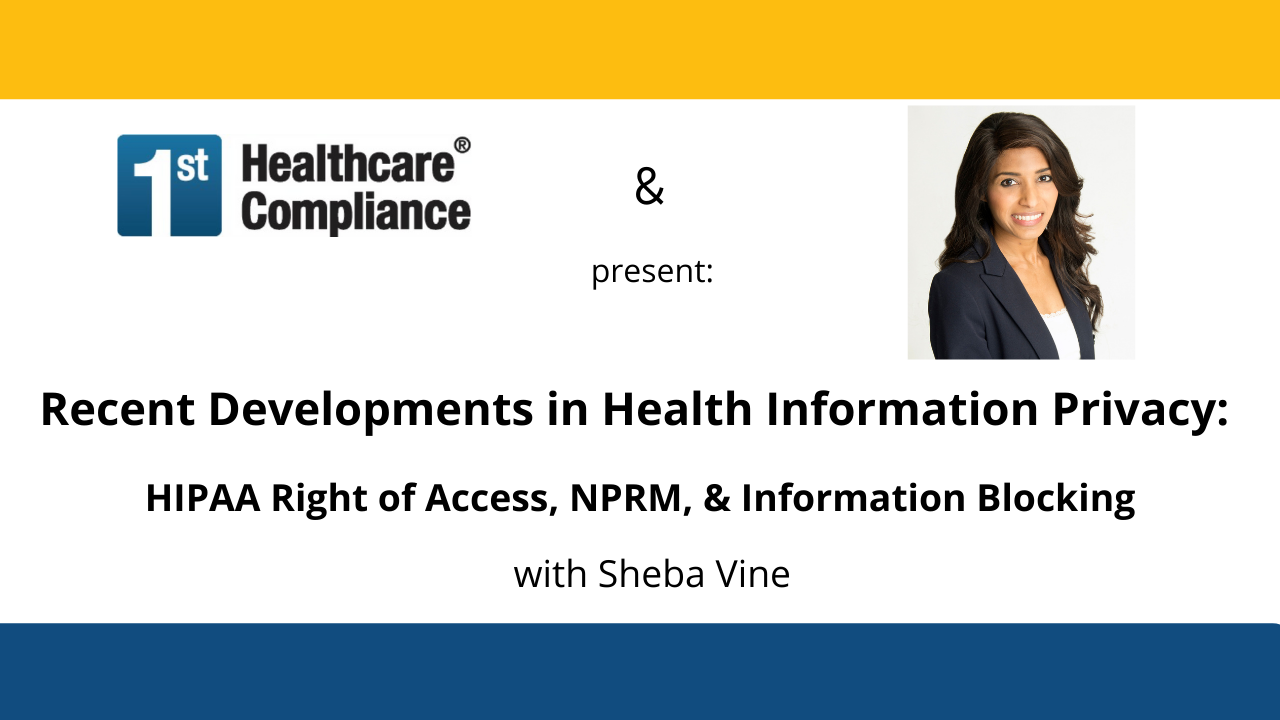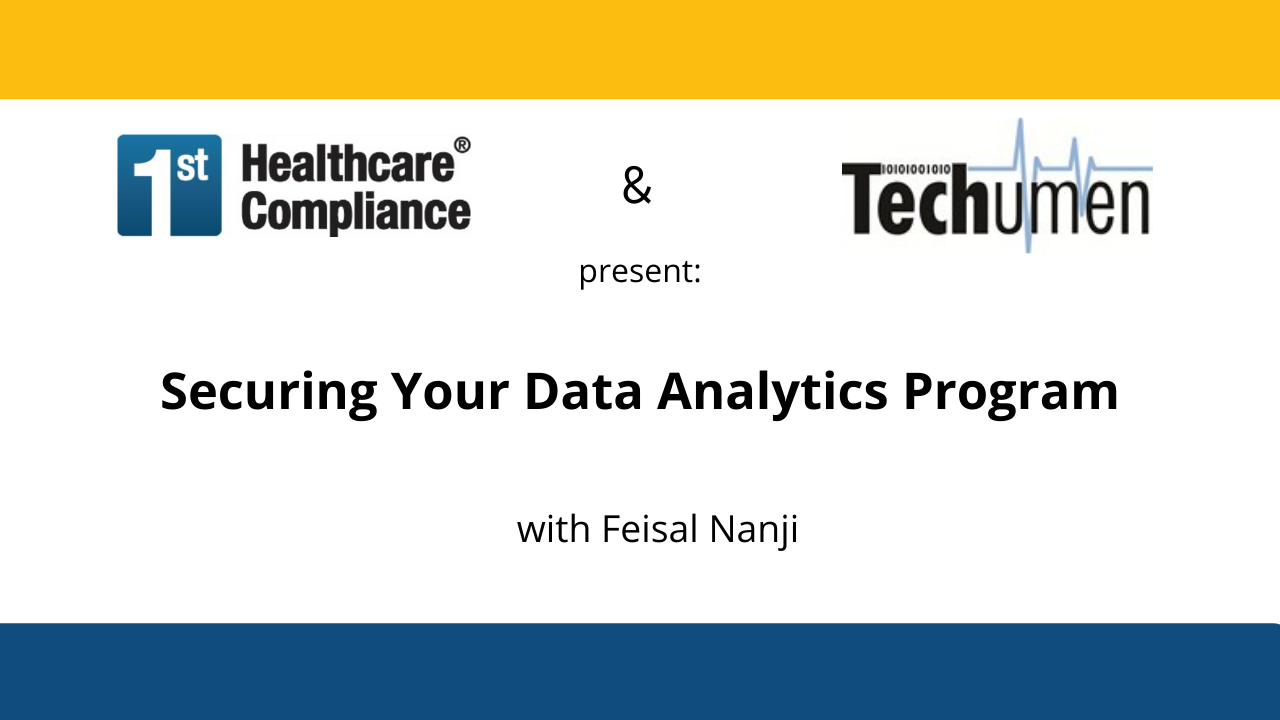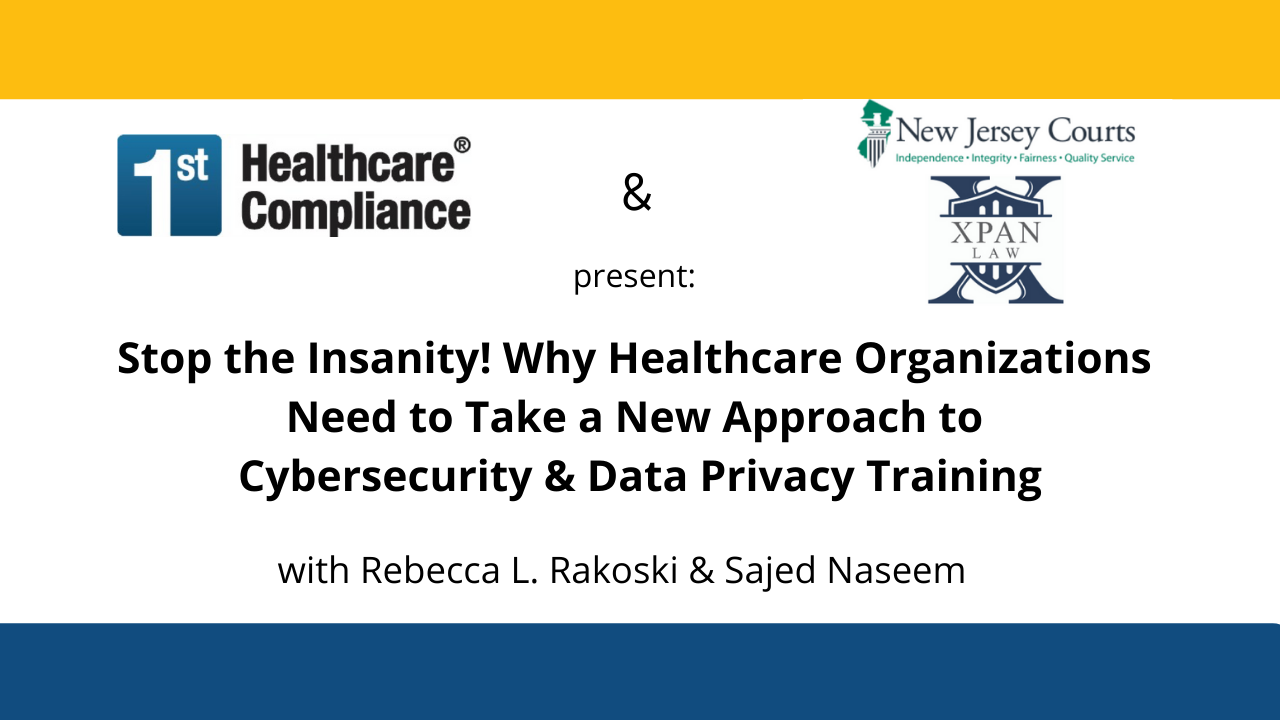New Stark Law and AKS Final Rules -Valuation Considerations

Subscribe: Amazon Music | Email | RSS | More
Valuation Considerations in the Era of the New Stark Law and…
- 27:54
SUMMARY KEYWORDS
compliance, rules, arrangement, valuation, fair market value, false claims act, participant, reasonableness, entity, healthcare, CMS, anti kickback statute, stark, physician, evaluation, based, HHS, final
SPEAKERS
Catherine Short, Don Barbo, Rachel V. Rose
TRANSCRIPT
Catherine Short 00:01
Welcome and let’s 1st Talk Compliance. I’m Catherine Short, Partnership Marketing Manager at First Healthcare Compliance. Thanks for tuning in. This show is brought to you by First Healthcare Compliance as part of our commitment to provide high quality, complimentary educational resources. We help create confidence among compliance professionals throughout the United States. Please show your support by taking a moment to provide a review on Google, Facebook or iTunes. You can also follow us on Instagram, Twitter, and subscribe to our YouTube channel.
On today’s episode, we are speaking with Rachel V. Rose, JD, MBA principal with Rachel V. Rose Attorney at Law P.L.L.C, Houston, Texas and Don Barbot, Managing Director with VMG Health on the topic of Valuation Considerations in the Era of the New Stark Laws and AKS Final Rules. On January 19 2021. A new era was ushered in as the CMS Stark Law Final Rule and the HHS-OIG Anti Kickback Statute Final Rule became effective. The impetus behind the new Final Rules is Value Based Care and Care Coordination. In light of the advent of Value-Based Arrangements, which include Value Based Enterprises, as well as the continuing importance of Fair Market Value and commercial reasonableness, we will focus on these aspects of the respective Final Rules, which must be read in conjunction with each other.
Before we begin, I would like to mention at First Healthcare Compliance, we strive to serve as a trusted resource for compliance professionals. Every month we celebrate their hard work and dedication with our compliance Super Ninja recognition. For this episode, we’re spotlighting Super Ninja Julie Garcia, Business Office Manager at Coastal Vascular Center. Congratulations, Julie, our team is honored to have the privilege of working with you. So hello, Rachel and Don! Thank you so much for joining me today on 1st Talk Compliance. Welcome!
Don Barbo 02:08
Thank you, Catherine. It’s Don. It’s a pleasure to be joining Rachel and you to give my views, my valuation perspective.
Rachel Rose 02:15
Likewise, Catherine, I echo Don’s sentiments and it’s a pleasure to join you both here today.
Catherine Short 2:22
Wonderful! Well, thank you again for joining us today here. So what was the driving force behind the changes found in the Stark Law and Anti Kickback Statute, otherwise known as AKS Final Rules?
Rachel Rose 2:27
Catherine, as you began the presentation, you noted that there was a shift in both the laws and the industry away from quantity and towards quality of care and related value based care and compensation models. Another valid point to raise in relation to this shift has to do with coordination of care. And it actually stemmed back to the Affordable Care Act, which everyone in the healthcare industry knows was passed over a decade ago.
Don Barbo 03:17
For my view, the driving force is spot on with Rachel, as well as Catherine have commented already, but it’s to provide the healthcare community with the way that they can align and collaborate in a business setting with each other so while VMG Health, my firm is not a law firm, we work hand in hand with legal counsel on our valuations to make sure that our valuations can in essence serve two purposes for our clients. One is to provide a fair market value range in which to negotiate an arrangement, but the second is so that it will be compliant, with the various rules and regulations that the healthcare industry is exposed to. So under these new rules, I do think there’s good clarification that can enable parties to hopefully have peace of mind to align and collaborate together, that maybe were not in place priorities in the world.
Rachel Rose 04:20
Perfect, and just so the audience has a frame of reference. The new Final Rules for the Stark Law are located at 85 Federal Register 77492, while the AKS new Final Rules begin on 85 Federal Register 77684. Both of those Final Rules were published on December 2 of 2020. And as Don indicated, a valuation expert is vital, in a variety of health care transactions, as well as hopefully not, but potentially down the line as litigation arises and from the legal perspective, in order to achieve the policy goals while maintaining compliance with these two very fundamental health care laws, it’s imperative that the entities meet the safe harbors and the anti kickback statute, which is a civil and criminal statute, as well as meeting the exceptions under the stark law in order to avoid potential penalties. Is there only one way to structure a Value Based Enterprise or VBE? Or is there flexibility? Catherine, that’s an excellent question. There is not only one way to structure a VBE. In fact, the Final Rules expressly state that there is flexibility in how a VBE is structured, because of the different types, the different scenarios and the number of participants in any given VBE. There are, however, some items that must be included in a Value Based Arrangement, including creating a governing document listing the VBE participants, identifying a target population and detailing the value based purposes are some of these requisite items. Now valuation can play a key role not only in a VBE, but also in the more traditional areas associated with health care. Don, your perspective here is going to be invaluable for the listeners.
Don Barbo 06:43
Sure. So, from a valuation perspective, whether we’re valuing a Value-Based Enterprise or some other business model, it’s important that we understand from the beginning of the engagement or actually before we even start, what is the business model that the parties are actually creating. So what in some of these things are laid out in the rules are very helpful to defining the business model in terms of who are the participants, what is the target population that will be served, what is the nature of the services that will be performed, and very importantly, what is the governing document in terms of who has control and maybe who has lesser control. So all of those are critical components, not only in structuring the VBE entity but also in doing evaluation because evaluation needs to be consistent with how the business model itself is structured.
Catherine Short 07:43
Can you tell me what the one key difference between Stark Law Final Rule and the AKS Final Rule might be?
Rachel V. Rose 07:52
One of the most notable differences is the differing definition of a VBE participant between the Stark Laws Final Rules, and the AKS Final Rule. Under Stark at section 411.351, a VBE participant is defined to mean a person or entity that engages in at least one value based activity as part of a value based enterprise. And CMS highlighted that the definition of VBE participant finalized here does not exclude any specific persons, entities or organizations from qualifying as a VBE participant. Now, before we delve into the drastic nuance between the Stark and the anti kickback statute, it’s very important to note that a VBE is not formed between a payor and a provider in terms of being participants and that’s something that is expressly stated, so just bear that in mind. So by way of contrast, the AKS final rule expressly identifies an eligible entity list that includes the following persons who may not be part of the VBE. As a VBE participant, I call it the Do Not Disturb list, because remember the AKS statute has potential criminal liability. So whenever I’ve structured these arrangements, I always make sure to check in see if any of the entities that are being proposed are on the list that I’m about to read off: pharmaceutical manufacturers, distributors and wholesalers referred to generally throughout the preamble as pharmaceutical companies, PBMs, laboratory companies, pharmacies that primarily compounds, drugs or primarily dispense compounded drugs, sometimes these are referred to generally in the rule as compounding pharmacies, manufacturers of devices or medical supplies, entities or individuals that sell DME/POS other than a pharmacy, or a physician, provider, or other entity that primarily furnishes, services, all of which remain eligible. They’re typically referred to as DME/POS companies. And a side note on that, that caveat other than a pharmacy or a physician, provider, or other entity that primarily furnishes services. This is where you can have a physician practice, for example, own a DME that is connected to the type of care that they provide. And as long as you meet the Safe Harbors and the other relevant exceptions, here, HHS-OIG is saying that is okay, but just make sure that you’re meeting the narrow exception that they’ve provided there. And finally, medical device distributors or wholesalers that are not otherwise manufacturers of devices or medical supplies. And it’s very important to note that physician owned distributor ships are very closely scrutinized by HHS-OIG. And over the course of time, Senate Committees have looked into these types of pods, as well as HHS issuing different bulletins on it. So it’s definitely one to put on your radar and to avoid in general. Catherine?
Catherine Short 11:49
How have these Final Rules impacted healthcare valuations in terms of fair market value and also commercial reasonableness?
Don Barbo 11:58
I would say in terms of how we would perform fair market valuations, general market valuations, the commercial reasonableness analysis, there isn’t a whole lot of change in between how we would set about performing those engagements. Now that the new rules are published, and the primary reason for that, is I would characterize the new rules as just providing additional clarification that maybe we didn’t have in the past, but that, regardless of not having necessarily specific clarification, I would say our way of doing valuations were, frankly, consistent with what’s being provided under the new rules. So specifically, now under the new rules, there are separate specific definitions for fair market value and general market value under Section 411.351. And were in the past the definitional components for fair market value in general market value, we’re in essence merged under a fair market value definition that now there’s actually a separate specific definition for fair market value, and a separate specific definition for general market value for three types of engagements. And those engagements cover asset, real estate, and equipment and compensation arrangement. So I would say just from a high level, characterize it as perhaps a bit cleaner of a definition, now, for those defined terms. In terms of commercial reasonableness, there is actually now a definition under the statute section 411.351 that in the past did not exist. In the past, the rule proposed and final rules, had provided commentary regarding the nature of commercial reasonableness, but not a real clear cut definition. Now, there is a definition, which I would say also is consistent with some of the commentary that had been provided in the past. But in regards to commercial reasonableness, I think the new rules actually do provide some clarification on a few concepts that had been debated in the evaluation community, as well as other healthcare more specifically, could an arrangement that is unprofitable, be by virtue of it being unprofitable, be automatically considered not to be commercially reasonable. So in other words, did profitability play a role, particularly if there’s a money losing arrangement? And the new rules about an answer for that, which is know that in and of itself, an arrangement that’s unprofitable is not automatically considered to not be commercially reasonable, and it actually provides some commentary on some reasons for that. But there’s also additional commentary that said, however, the issue of profitability is not wholly irrelevant for profit. This is of determining commercial reasonableness. So the door is certainly left open as the parties still are required to do something that makes sense between parties that are not in referring relationship. The second thing that I think provided some clarity is that the issue of commercial reasonableness is considered a separate requirement from fair market value that those are two different concepts. Lastly, is where the volume and value restriction previously was embedded within the definition of fair market value. Now that’s been separated and created as its own requirement. While it’s still not permissible for physician compensation to incorporate the volume and value of their DHS referrals, it’s now kind of a standalone requirement carved out from from the fair market value definition.
Rachel Rose 15:48
One of the key clarifications in the December 2 final rule on the Stark side of the equation is that when compensation is from an entity to a physician, the formula used to calculate the compensation includes as a variable, the physicians referrals, and the compensation positively correlates to the volume or value of the referrals to the entity, then the compensation is not permissible. Under the bonafide employment exception, though, to bring it back to what you just said before, fair market value, general market value and fair market value were basically one paragraph, and CMS really tried to create more bright-line rules, you have to read them in conjunction with each other as well as, as you articulated, including commercial reasonableness, as well.
Don Barbo 16:49
Great. And thank you for adding those concepts of positive correlation and negative correlation. Because I do think that’s also extremely helpful to the parties when they’re considering an arrangement. If, for instance, if a physician tenant is paying rent to a landlord, and the physicians rental rate goes down, as referrals for that position tend to increase, then that would be an example of a negative correlation, that would certainly not be something that would be permitted, as opposed to a positive correlation that the physicians comp increases as the referrals increase.
Rachel Rose 17:25
It’s invaluable to have the appropriate valuation experts on board so that they can delve into that and put their valuations and potential scenarios which may arise in the context of that framework.
Don Barbo 17:42
My valuation perspective, we’re relying upon legal counsel to help determine if your arrangement is permissible. And as Rachel articulated under the VBE requirements, just alone, what is eligible versus ineligible? That can be quite complicated, hugely important to us on the valuation side to make sure our clients are getting good sound and qualified legal advice, because at the end of the day, we’re going to have a prominent disclaimer that we’ve assumed that this business model complies with the applicable regulatory laws and regulations, because we’re not healthcare counsel, and we’re not qualified to make that determination.
Catherine Short 18:20
That’s really very interesting. So, if you’re just tuning in, you’re listening to 1st Talk Compliance brought to you by First Healthcare Compliance as part of our commitment to provide high quality complimentary educational resources. We create confidence among compliance professionals throughout the United States. My guests today are Rachel V. Rose, JD MBA principal with Rachel V. Rose Attorney at Law P.L.L.C and Don Barbo, managing director with VMG Health in Dallas, Texas, about Valuation Considerations in the Era of the New Stark Laws and AKS Final Rules. Please show your support by taking a few minutes to provide a review of First Healthcare Compliance on Google or Facebook. Don and Rachel, appreciating that either an internal event or an external event can change valuation the day even after it’s done, what is considered industry practice for conducting property leases, equipment leases and medical director or other employment contracts which incorporate fair market value or commercial reasonableness?
Rachel V. Rose 19:32
The timing of internal or external events and the validity of a particular valuation. We also see that in the HIPAA landscape in terms of not evaluation, but really, a risk analysis is only truly as good as the day that it is done. Now having said that, reasonable people cannot undergo a Risk Analysis multiple times a year unless there is a very significant event either internally or externally. And HHS has said on that front that, risk analyses are good for a year. And Don, the shelf life of a valuation in the Stark anti kickback statute type of context in what you do on the valuation side really begins with that same concept.
Don Barbo 20:30
Correct. And so this is a question that we’re often asked about, which is how long is a valuation basically good for or to use Rachel’s point, how long is the shelf life of it? And technically speaking, as Rachel mentioned, it’s really as good as, it’s effective for the date that the evaluation was issued. So if we did evaluation effective December 31 2020, that’s the date that it’s effective. And, and how long quote is that valuation good for really depends on the volatility of the various forces that are impacting that business or that arrangement. So the more volatile the environment is, the more likely that the valuation has a shorter shelf life, if you will, versus a longer. So some of those impacts are everything from the economic, regulatory competitive in another kind of market, environmental factors that the business or arrangement is subject to, for us to maybe take a look at that. The short answer is, the shelf life definitely depends upon how dynamic the market forces are that are impacting the business or the arrangement. And some clients might prefer a shorter period versus a longer period based on those dynamics in the volatility.
Catherine Short 21:59
What would you say some compliance tips are that can help reduce risk of either government agency enforcement action and or becoming a defendant in a False Claims Act case?
Don Barbo 22:12
In choosing a valuation expert is important that selection is made for someone that’s experienced in this unique area. Because even as a firm, we spend 100% of our time on healthcare evaluations. That’s all we do. It’s still a challenge staying on top of the unique rules and requirements, which then goes to maybe making sure that the valuation expert is using industry accepted standards for performing valuations, but that also are unique to the healthcare settings. The second volume and value of referrals are not included in the other requirements. From my end, what I would say are some key compliance risk is choose your valuation professional wisely and making sure he or she is qualified and experienced in this unique area and also certainly involving health care accounts.
Rachel V. Rose 23:08
First and foremost, when structuring value based enterprise or a VBE, it’s imperative a to make sure that none of the participants are on the AKS ineligible list. And secondly, that all of the elements that are defined even broadly, such as what is the value based purpose, who is the target patient population, who is the individual that has been designated as the financial and operations oversight person, all of those items absolutely have to be included in a written and signed document. If you’re making a cyber donation, this is a completely separate part of both final roles, but it’s a huge area for a couple of reasons. First, in February of 2021, the DOJ listed its top enforcement areas in cyber security’s one of them. Historically, the anti kickback statute and the stark law have been used as the basis of False Claims Act violations, in part because any time a provider signs up to be a provider with Medicare and Medicaid and other government programs, they have to submit an attestation form to CMS, typically that CMS form 855. And there are different letters depending on the type of provider. But on the back. the attestation says, “I hear…” and I’m paraphrasing, but “I hereby agree to adhere to all material laws and regulations including the stark law and the anti kickback statute. I am aware that submitting a false and fraudulent claim may in fact lead to False Claims Act liability.” Not only does that language appear on the initial application to be a provider with CMS, it subsequently on every claim that is submitted by a provider whether through a CMS form 1500, or a CMS form UB4. It is an area that I see a traditional type of False Claims Act really being coupled with a cyber focus. So you want to make sure that there is a written document that the required elements are being met, and that there is no exchange for volume, or value. Finally, and this is just overall common sense. Make sure that you as a provider, or healthcare industry participant are making sure that any arrangement fits within the AKS Safe Harbors, and the Stark law exceptions. A key component to doing that is partnering with very good valuation experts and potentially compliance company. So VMG Health would be one example of a very trusted firm. And in fact, Don has testified for the United States government and a very well known case out of Dallas, Texas, the Forest Park case and trusted compliance entity would be First Healthcare Compliance.
Don Barbo 26:27
Once the governing documents and other pertinent policies and procedures are drafted, just placing an importance on making sure that it’s actually followed, and that the parties are held accountable. Rachel mentioned my testifying history. I lead our firm’s litigation and dispute practice. And there are occasions that the parties have failed to follow an arrangement that is papered up and looks very good on paper. But if the parties are not sticking to it and are not compliant with it, then that can obviously lead to issues.
Catherine Short 27:03
Thank you so much, Rachel and Don, and thanks to our audience for tuning in to 1st Talk Compliance.
Don Barbo 27:11
You’re very welcome. It’s my pleasure. And Rachel, thank you again for the opportunity to co-present with you. It’s always a pleasure.
Rachel V. Rose 27:18
Likewise.
Catherine Short 27:18
Thank you. And you can learn more about the show on the program’s page on healthcarenowradio.com and lend your voice to the conversation on Twitter @1sthcc or #1sttalkcompliance. You can also email me at catherineshort@1sthcc.com. I’m Catherine Short of First Healthcare Compliance. Remember, compliance is the key to achieving peace of mind.




